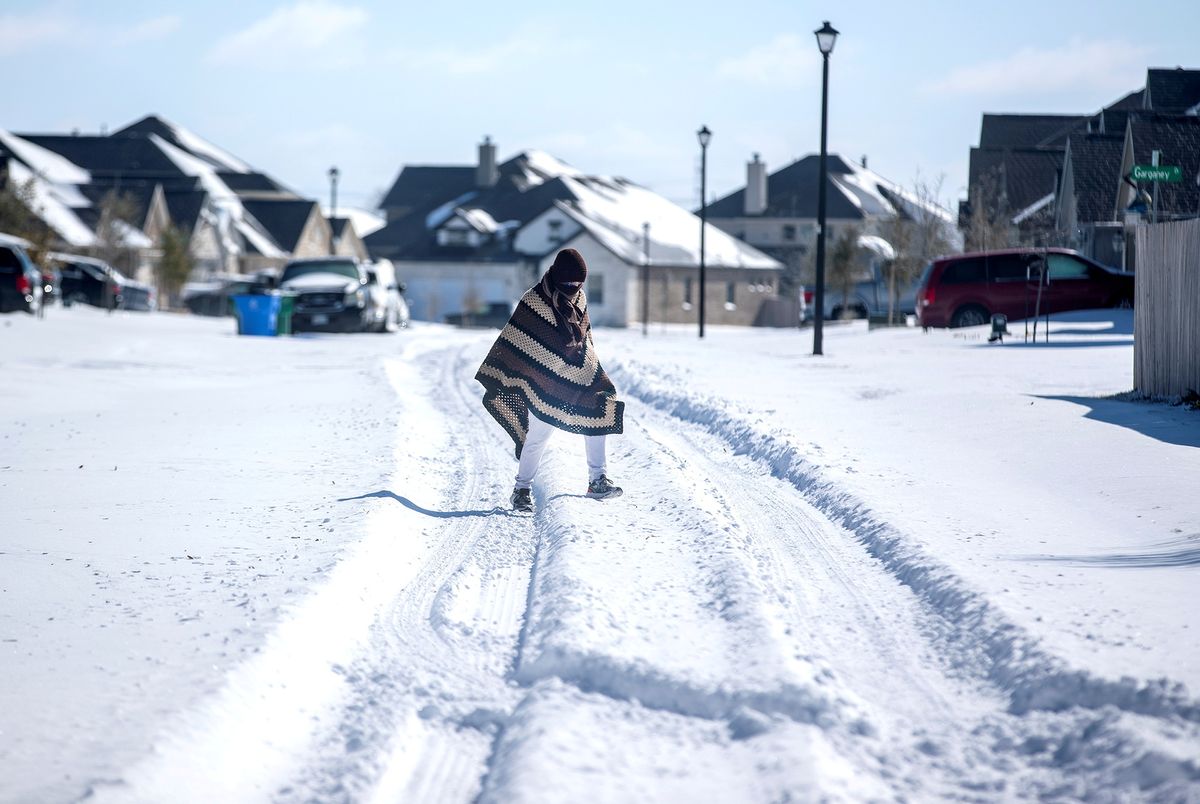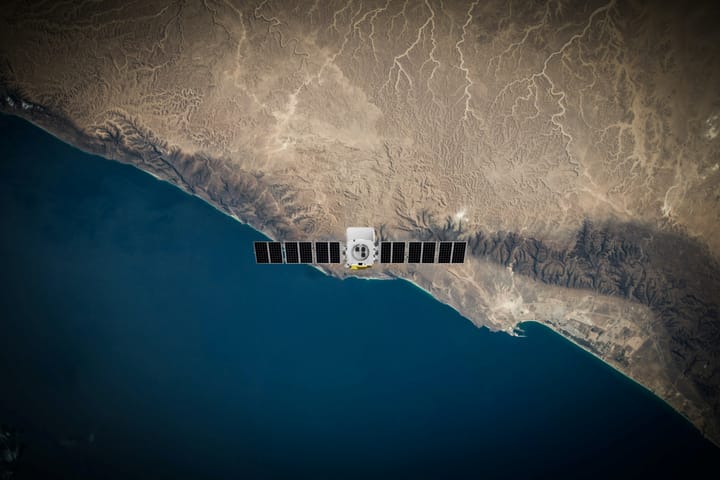What’s really going on in Texas?

A few minutes every morning is all you need.
Stay up to date on the world's Headlines and Human Stories. It's fun, it's factual, it's fluff-free.
While power outages during severe winter storms are not uncommon, especially in rural areas, the extent and longevity of the Texas blackouts have created an emergency, one that has led to finger pointing.
On the night of February 14, Winter Storm Uri brought frigid temperatures and snowfall to Texas and Louisiana, a region of the United States that rarely sees its temperature fall into the single digits. Much of the US Midwest was blanketed by cold and snow, but in Texas, the deadly weather event was exacerbated by a failing electrical system that has left millions without power.
While power outages during severe winter storms are not uncommon, especially in rural areas, the extent and longevity of the Texas blackouts have created an emergency, one that has led to finger pointing. Republican politicians in the state have laid the blame on the wind turbines, stating that their failure in the cold weather put too much pressure on the electrical system.
It’s a dubious claim considering that most of the state’s power supply is from natural gas. Additionally, Texas’ power grid is wholly independent and not subject to federal regulation. As a result, critics say, the system was poorly prepared to handle this sort of severe weather event.
Some warn that as the effects of climate change worsen, the state is likely to continue experiencing similar storms.
Winter Storm Uri hits Texas
Valentine’s Day brought bitter cold to Texas as Winter Storm Uri made its path from the Pacific Northwest down over much of the rest of the country and out toward the Atlantic coast. As snow hit a region unaccustomed to such precipitation and temperatures plummeted, millions of residents across the state lost power.
Sunday night, President Joe Biden approved an emergency declaration for Texas, authorizing the Department of Homeland Security and the Federal Emergency Management Agency (FEMA) to coordinate disaster relief efforts in the state. FEMA was authorized “to identify, mobilize, and provide at its discretion, equipment and resources necessary to alleviate the impacts of the emergency.”
By Tuesday, 17 deaths across the southern region had been directly attributed to the storm, which had also reached the Eastern Seaboard. Power outages were reported across the country as temperatures reached record lows in many places. Texas’ struggles became national news as much of the state was left to manage the worst winter storm in generations without electricity.
The subsequent days of cold temperatures broke records in the state, with the lowest recorded temperatures on Monday and Tuesday in three of Texas’ largest cities, Dallas, Austin and San Antonio – lows not seen in more than a century.
Who’s to blame?
On Tuesday night, Texas Governor Greg Abbott appeared on Fox News in an interview with Sean Hannity to discuss the storm and his state’s response. Abbott placed the blame for the power outages in his state on the Green New Deal and claimed it was the shut down of the state’s wind and solar energy systems that had strained the system.
“It just shows,” Abbott claimed, “that fossil fuel is necessary for the state of Texas as well as other states to make sure that we will be able to heat our homes in the wintertime and cool our homes in the summertime.”
It was a line of reasoning taken up by The Wall Street Journal’s editorial board, which blamed the situation on “a perfect storm of bad government policies, timing and weather,” saying “competition from heavily subsidized wind power and inexpensive natural gas, combined with stricter emissions regulation, has caused coal’s share of Texas’s electricity to plunge by more than half in a decade to 18%.”
Critics immediately pounced on these arguments. For one, the Green New Deal, an extensive policy package intended to address climate change while creating green energy jobs, has never been passed into law, having been easily defeated in the Senate in 2019. Abbott has long opposed environmental regulations and has touted the lack of regulations as a reason businesses relocate to his state.
As The Texas Tribune reported on Tuesday, the state still relies on natural gas more than any other power source. It was the failure of the natural gas infrastructure that caused the problem, experts say, because it “was unprepared for the plunging temperatures brought by the winter storm.”
Pure the Tribune, “Failures across Texas’ natural gas operations and supply chains due to extreme temperatures are the most significant cause of the power crisis that has left millions of Texans without heat and electricity during the winter storm sweeping the U.S.” That was according to the Electric Reliability Council of Texas (ERCOT), which manages much of Texas’ power grid.
While frozen wind turbines did play a small part in the power difficulties, so did frozen natural gas wells, to a much larger degree. A full 80% of the power grid is powered by natural gas (or fossil fuels), compared to only 7% provided by various wind power sources.
Why was the system so unprepared?
Critics have blamed Texas’ uniquely deregulated power system for much of the problems the state has faced this week. It’s a policy known as Texas Electric Choice and it exists to create competition among independent power companies, which in turn results in lower rates for consumers. This free market solution to electrical costs was introduced in 2002.
The side effect of this solution, though, is worse infrastructure. Companies have been blamed for sidestepping unenforceable industry guidelines, including investing to strengthen their power grids. In states where temperatures regularly reach lows like those Texas experienced on Monday and Tuesday, or even lower, power grids have been winterized to handle the extreme weather.
The Texas power infrastructure is also not subject to federal regulation because its grid is wholly self-contained. The state receives none of its power from other states, so it is not bound by the Federal Power Act signed in 1935 by President Franklin D. Roosevelt.
More to come
Even as millions are still dealing with power outages and rolling blackouts (a system of intentional outages meant to ease the load on power grids), Winter Storm Viola is already bearing down on the region, bringing more cold and snow.
That is especially bad news for Texas’ poor and marginalized groups, which The New York Times reported have been the hardest hit by the power outages. Amid the statewide problems, “experts and community groups say that many marginalized communities were the first to be hit with power outages, and if history serves as a guide, could be among the last to be reconnected.”
Despite efforts to shift the blame to wind power, the state leaders, all of whom are Republican, are likely to come under heavy scrutiny.
Republican Senator Ted Cruz has already seen a backlash after old tweets of him mocking power outages in California during the 2020 wildfires surfaced. Cruz acknowledged the comments, tweeting, “I got no defense. A blizzard strikes Texas & our state shuts down. Not good.”
A day later, Cruz was spotted with his family boarding a plane to Cancun. He again received widespread condemnation for leaving the state on vacation while millions remained without power.
Have a tip or story? Get in touch with our reporters at tips@themilsource.com




Comments ()